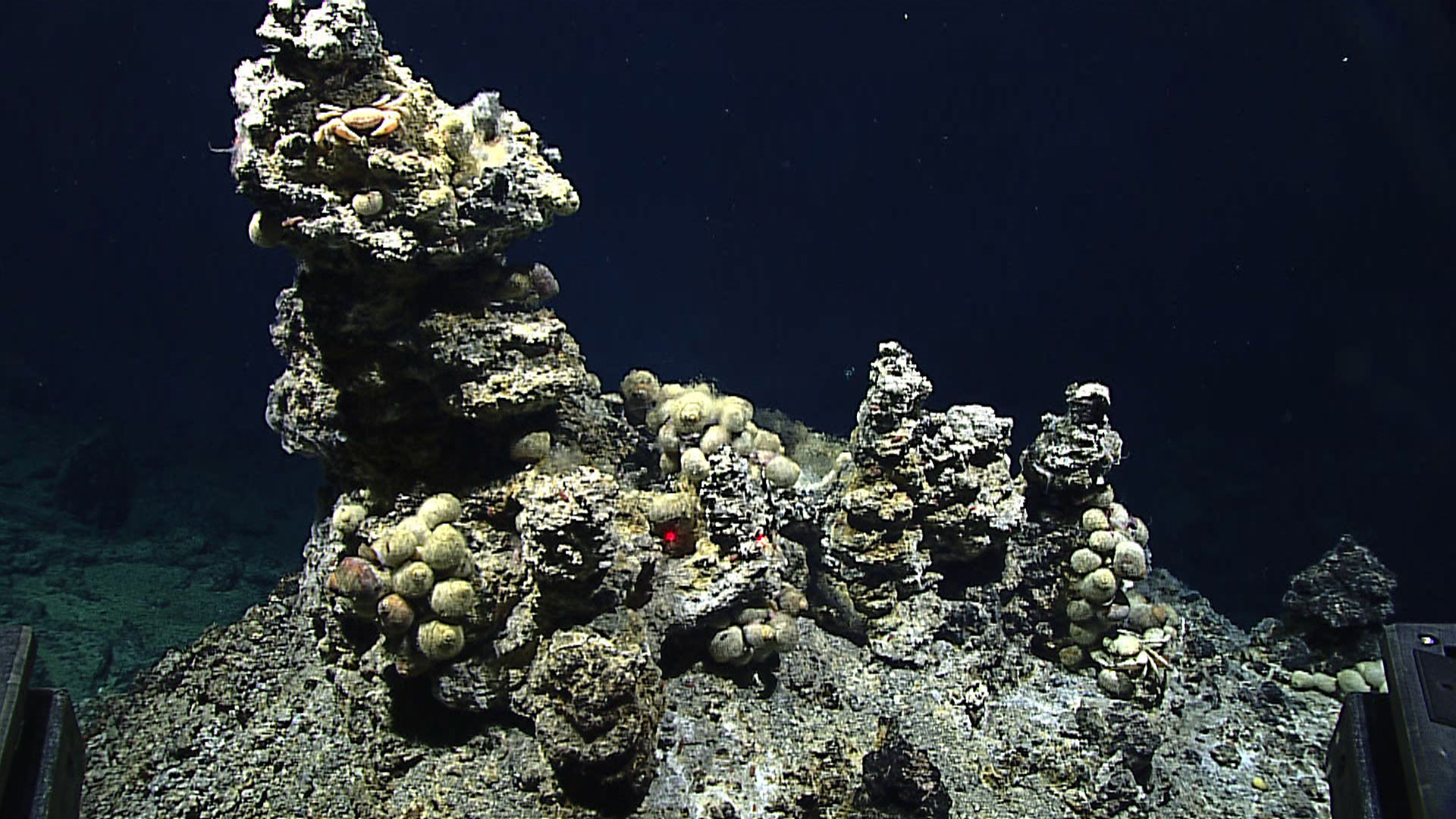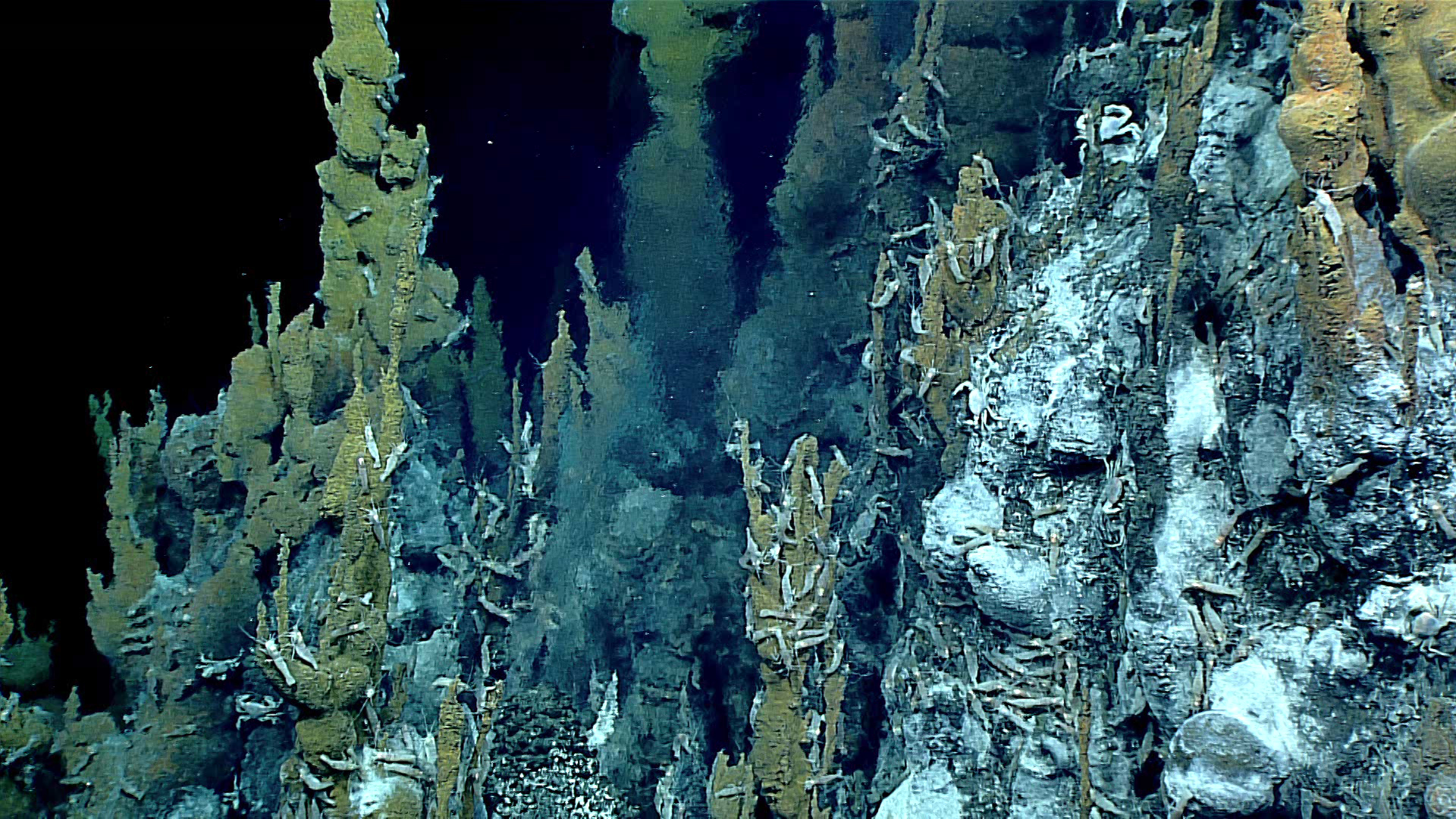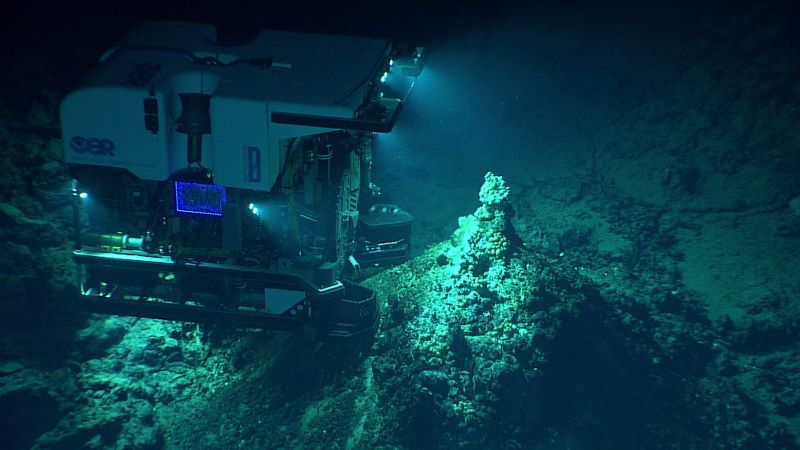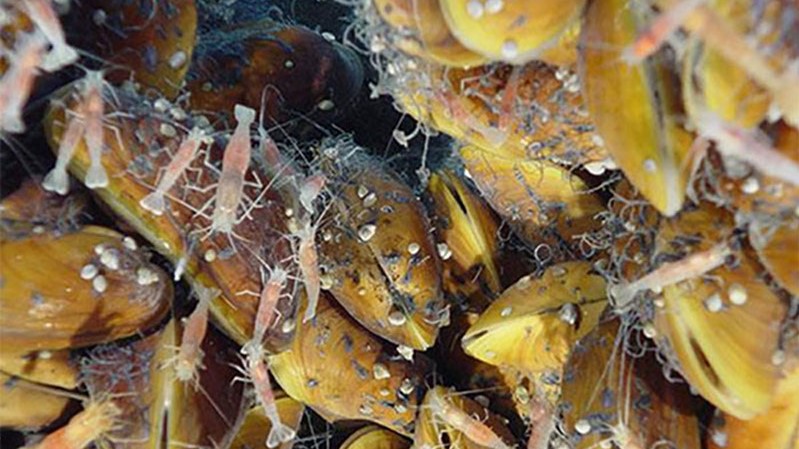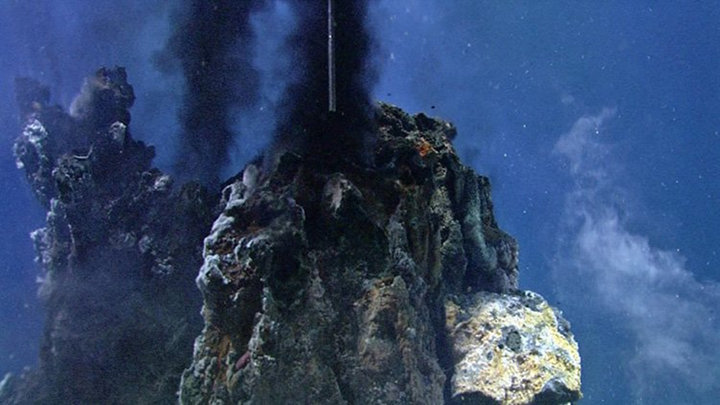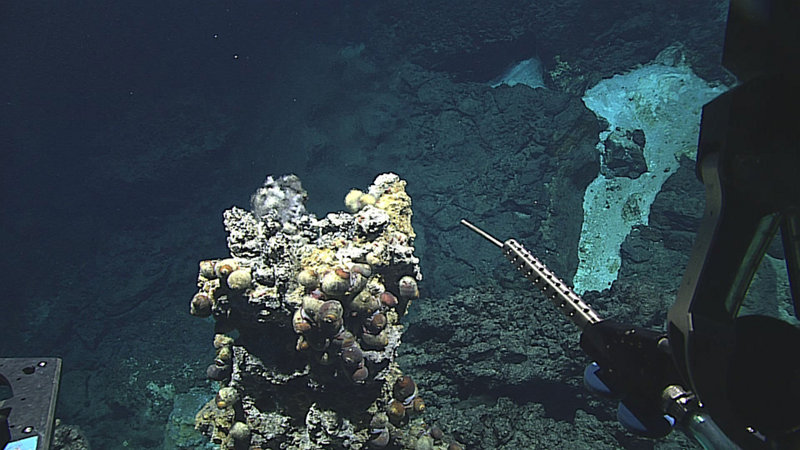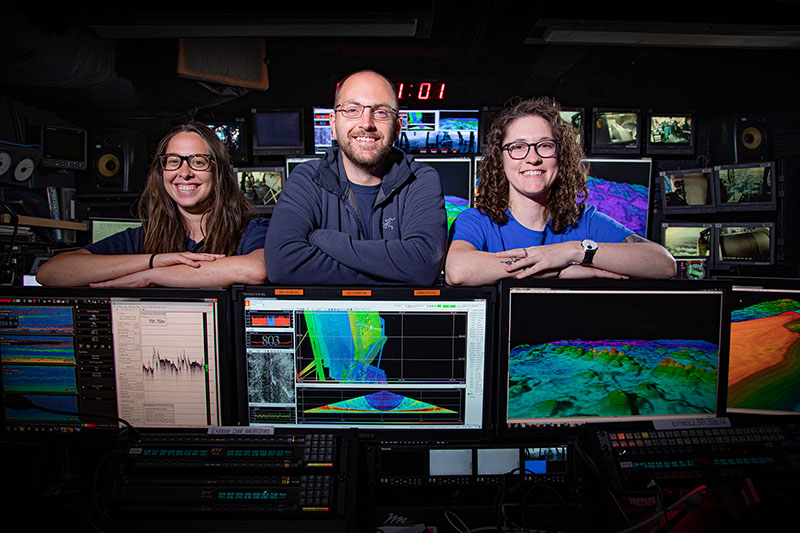Most of the active volcanoes on Earth are located underwater. Most commonly occurring along tectonic spreading centers, submarine eruptions release molten rock from below the seafloor. On the other hand, hydrothermal vents are the result of sea water percolating down through fissures in the ocean crust near spreading centers or subduction zones. The cold seawater is heated by hot magma, and reemerges to form the vents. Despite being in areas with no light for sunlight-driven food production, extinct, and even mildly active, volcanoes and vent sites often support diverse communities of animals that have adapted to produce food using chemical energy, via a process known as chemosynthesis.
Choose from the sections below to further explore ocean exploration education resources on vents and volcanoes.

Education Theme

